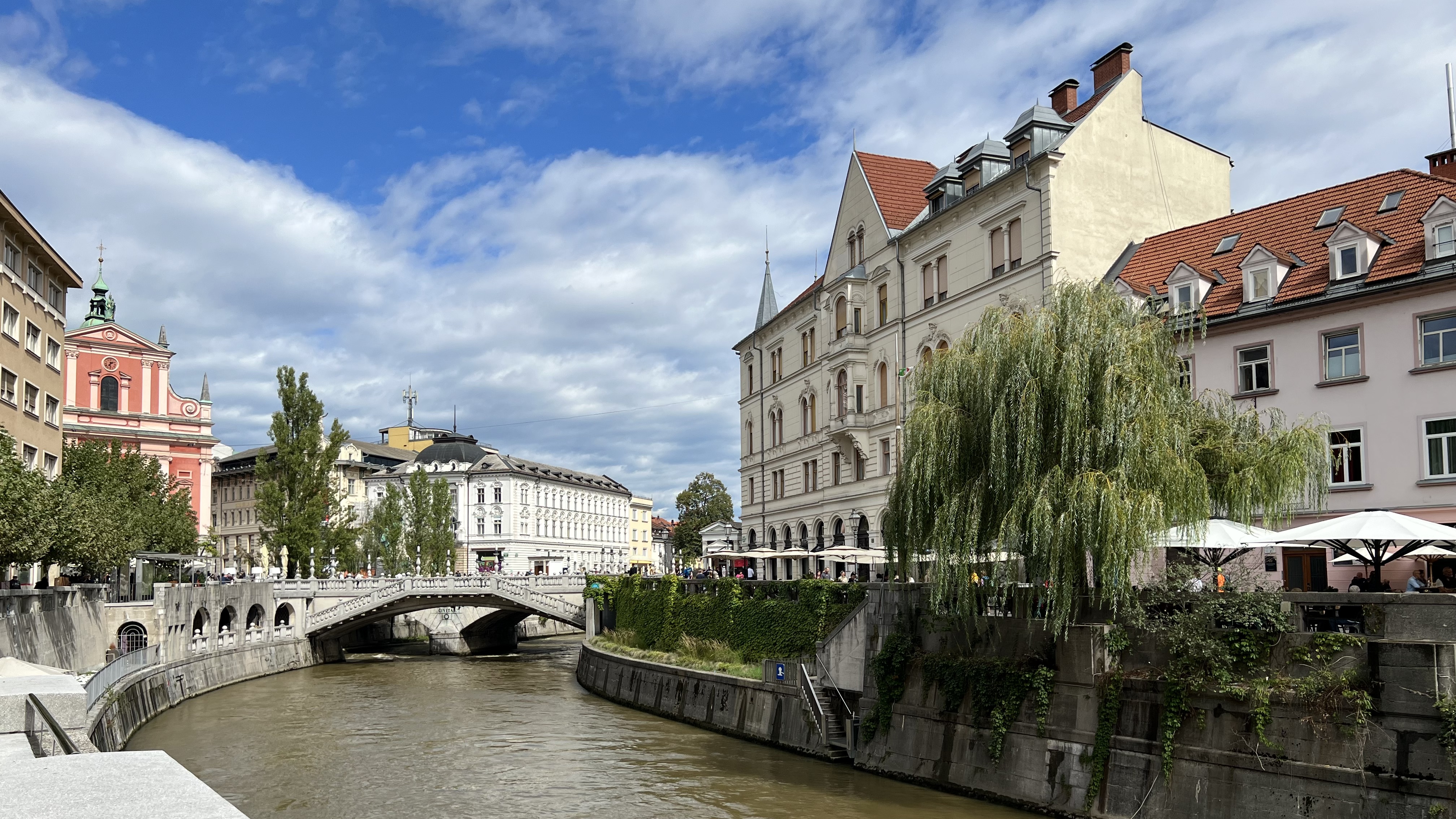
Table of Contents
Charming Ljubljana sits high above a river called the Ljubljanica that winds through the Art Nouveau-inspired town.
Rather than taking a boat cruise to discover the more subterranean Ljubljana, we explored the Old Town at street level, admiring the Austrian-Baroque buildings, Vienna-Secessionist bridges, and sculptures inspired by Greek mythology.
Date of Visit: September 19, 2022—Ljubljana, Slovenia
On a lovely, sunny September morning, Chris and I reached the Croatia-Slovenia border. Our driver, Frane, had picked us up in Zagreb for the two-hour drive to Ljubljana, the capital of Slovenia.
Everything was perfect. The rain was gone. Croatia Airlines had dropped off our lost luggage at our hotel the night before. We had clothes, shampoos, cosmetics, and toothbrushes. All the things that we didn’t or couldn’t pack in our carry-on luggage.
Now I was looking forward to seeing the city’s Art Nouveau architecture. Damaged by an earthquake in 1895, part of the Old Town was rebuilt in the Vienna Secessionist style. This art form influenced several impressive structures. The Dragon Bridge, Triple Bridge, and some of Prešeren Square’s buildings are among them. And yet, top of my list was a visit to the Baroque castle on the hill.
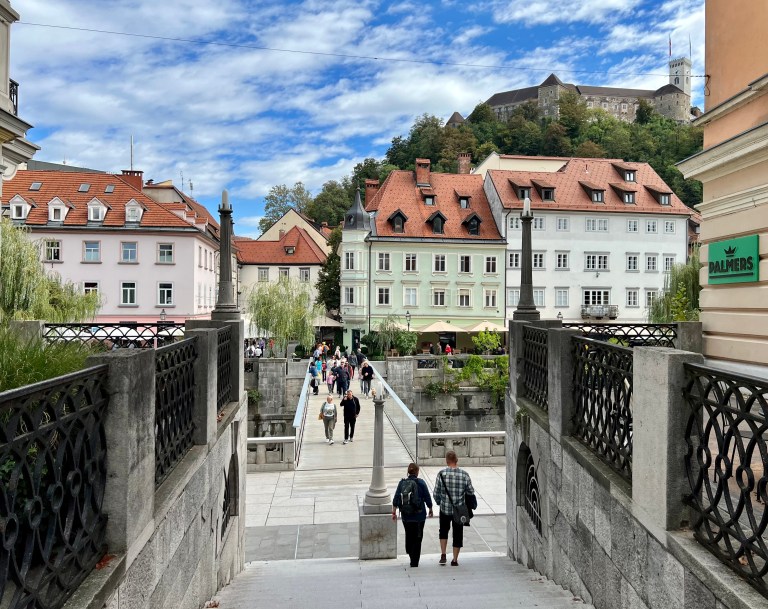
Getting to Ljubljana
There are many ways to travel between Croatia and Ljubljana. These include commuter planes, rental cars, private transfers, buses, and trains.
But hiring a private driver for our 14-day trip was the best thing we did. There was no need to learn foreign traffic regulations or worry about toll money. We also didn’t have to buy a “vignette,” which is Slovenia’s mandatory highway windshield sticker. Instead, our driving company handled all the transportation headaches and paperwork.
The proximity of Croatia and Slovenia is but one of many reasons to begin a trip in Croatia’s capital, Zagreb. (See Arrival in Rainy Zagreb). We drove past green fields and distant tidy villages. The deep blue sky edged pitched red rooftops and church steeples. Some steeples had onion designs, but most had Italianate square edges.
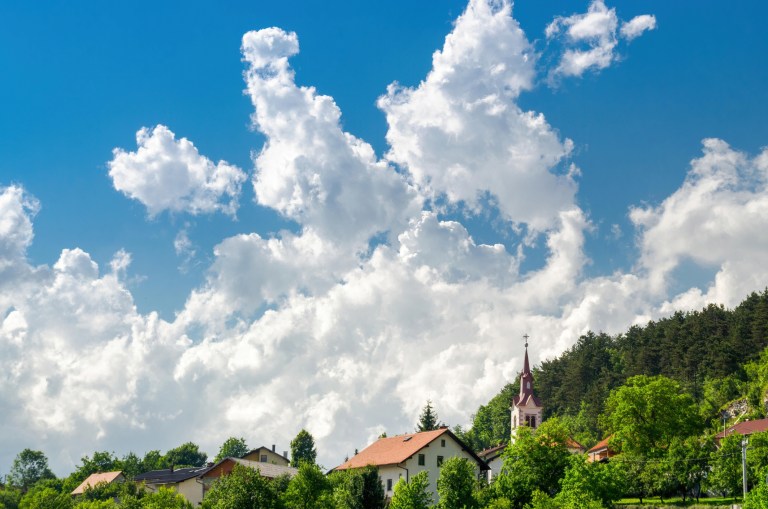
A Strategic Crossroads
Located at the crossroads of Europe, Slovenia links central and southeastern Europe. Wedged between the Alps and the Adriatic Sea, and despite its small size, this land was once considered a strategic foothold by the Romans, Austro-Hungarians, Ottomans, and Napoleonic French. In World War II, Slovenia was later carved up and annexed by Fascist Italy, Nazi Germany, and Hungary.
The Slovenian Alps
The Slovenian Alps are the southern backbone of the European mountain range stretching from France, Switzerland, Italy, Liechtenstein, Austria, Germany, and Slovenia. They include the Julian Alps, the Karawanks range, and the Kamnik-Savinja Alps, which can be seen from Ljubljana.
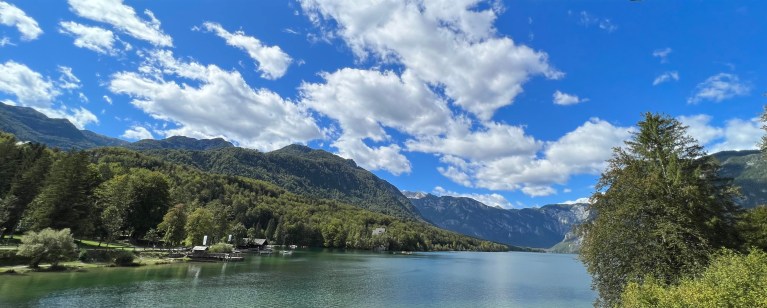
While Slovenia is still off the beaten track for most tourists, its undulating mountains, green valleys, cerulean lakes, and winding rivers attract adventure-seekers and nature lovers of all ages. In addition, Slovenia has a sliver of coastline on the Gulf of Trieste, where the medieval town of Piran is located. At certain times of the year, a 2 1/2-hour ferry ticket can be booked from Piran to Venice.
Our Itinerary to Visit Slovenia
With only a few days to spend in Slovenia, we planned to stop in Ljubljana (pronounced loo-blee-aa-nuh) for a tour with a local city guide who would show us the castle, famous bridges, and Prešeren Square, named after Slovenia’s beloved bard.
Then we would drive another 45 minutes northwest to Lake Bled to spend the next two nights at Grand Hotel Toplice on the waters’ edge. Photos of this hotel looked stunning, and it would be our biggest hotel splurge for the entire trip. Finally, on the third day, we would return to Croatia along a southwesterly route to stop and see the Lipica Stud Farm. For our full 14-day itinerary, see Road Tripping on the Balkan Peninsula.
The Flavor of Ljubljana
Ljubljana (its Roman name was Emona) sits on the banks of the Ljubljanica River. Outdoor cafés, restaurants, and bars line the right bank. Ljubljana has a population of just over 270,000 people. In the pre-Covid years, it nearly doubled in size, with several hundred thousand tourists who came from all over the
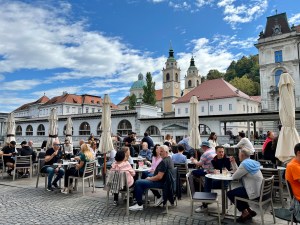
world to see this bustling cultural hub that is home to a Baroque castle (one that has been revamped from its beginnings as a medieval fortress), art galleries, theaters, and museums. Yet it is still relatively undiscovered and has the feel of a laid-back college town with many students coming here to attend the universities, business schools, and colleges.
Ljubljana's Turbulent History
Ljubljana’s artsy, relaxed culture belies the country’s turbulent history. The Roman Empire conquered the resident Illyrians and Celts and ruled from the second century BC to 400 AD. Finally, their weakened empire could no longer resist the Germanic barbarian invaders and the nomadic Huns.
The Slavs, who today make up the predominant ethnicity in Slovenia and the rest of the Balkan peninsula, were relative newcomers when they came from the Carpathian mountains or Black Sea region in the sixth century. They ruled autonomously until they were absorbed into the Holy Roman Empire in the ninth century.
The Habsburgs
During the Late Middle Ages, the Austrian Habsburgs took control of most of what is now Slovenia in the mid-14th century, and it remained largely under their rule until World War I.
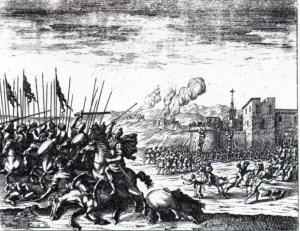
The Counts of Celje (a medieval noble dynasty once a vassal of the Habsburgs), Ottoman invasions, and peasant wars challenged Habsburg rule. The Ottomans never gained a foothold in Slovenia as they did in Croatia, Bosnia and Hercegovina, and other countries in the Balkan Peninsula, but they were a constant menace.
During the Napoleonic Wars, the First French Empire ruled the area briefly from 1809-1814. Napoleon made Ljubljana the capital of his Illyrian Provinces.
Yugoslavia and Socialism
Many years later, the Slovenians began to agitate for independence, and in 1918, they joined with the Serbs and Croats to form Yugoslavia. During World War II, Slovenia was occupied by the Italians, Hungarians, and Germans before becoming an independent state of Slovenia within the Federal People’s Republic of Yugoslavia from 1945 to June 1991, when it gained independence from the crumbling socialist regime.
It is against this history that Ljubljana’s architecture begins to make sense. The Old Town reflects Austrian influences, but those have been commingled with the more modern Art Nouveau movement. The rest of the city shows more signs of its socialist past.
Ljubljana Earthquake Sparks Revival
Many of the Old Town’s well-preserved buildings date back to the Ljubljana Revival period that followed the Easter Sunday 1895 earthquake. Ten percent of Ljublana’s buildings were damaged or destroyed in the earthquake that measured 6.1 on the Richter scale.
See Total Slovenia News’ “Old Photos: Ljubljana After the Earthquake.“
Art Nouveau
Ljubljana’s more iconic buildings and bridges were rebuilt in the Vienna Secessionist style, an offshoot of Art Nouveau.
This style was popular in Europe from 1892 to 1906. The Hauptmann House on Prešeren Square was redesigned in the Art Nouveau style even though it was undamaged by the quake.
Some buildings retain Baroque facades from the 16th and 17th centuries and give the Old Town an Austrian feel.
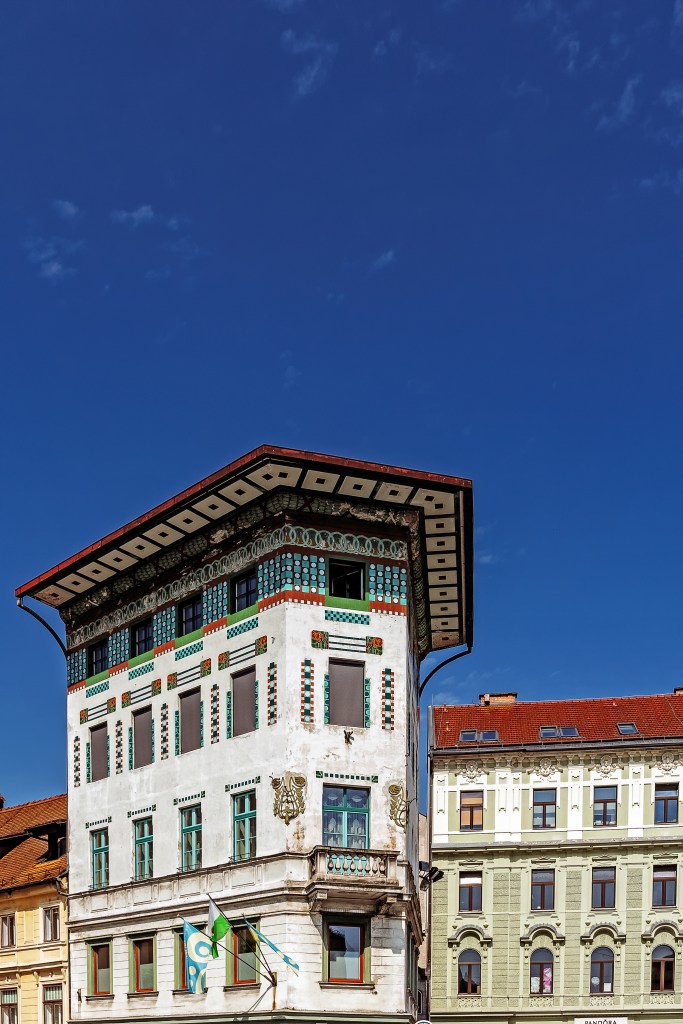
But the Dragon Bridge, Triple Bridge, and Cobblers’ Bridge all reflect the decorative curves and motifs of the Vienna Secessionist style influenced by the Arts and Crafts movement.
It’s easy to explore the pedestrian-only Old Town on foot. Other than bicycles and the free lime green electric “Kavalirs” (cars that are called Gentle Helpers), that is your only option. A Funicular leaves every 10 minutes from Krek Square opposite the Ljubljana Central Market to carry passengers 230 ft up to Ljubljana Castle.
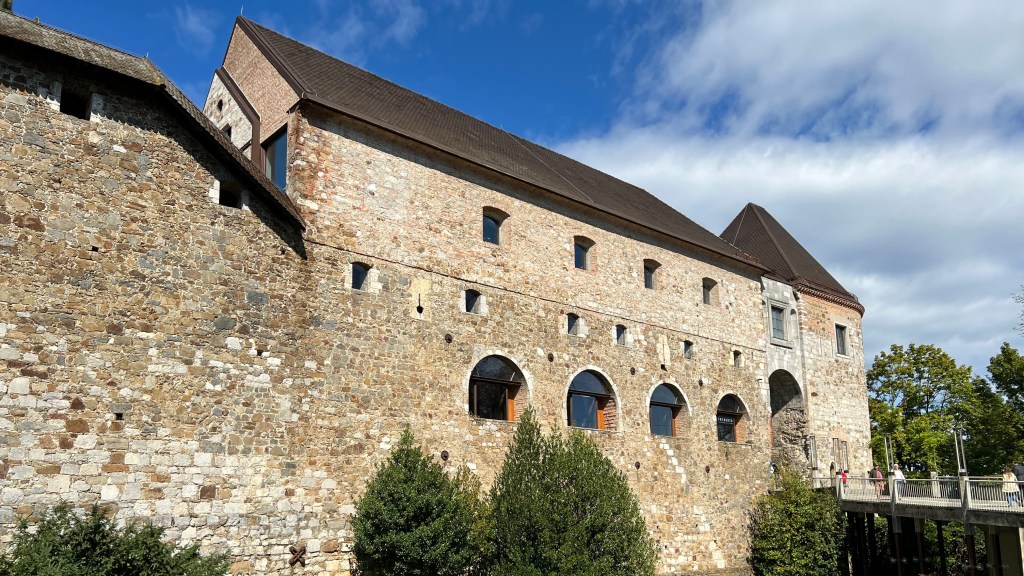
Ljubljana Castle
We met our tour guide, Mirzeta “Mirza,” in front of the empty Riverside Market. It was Sunday, so the market was closed. We decided that our tour would start with the Baroque-style Ljubljana Castle, which sits high above the city and provides a great view of the surrounding mountains. We jumped on the funicular that lifted us effortlessly up to the castle.
As we wandered the castle grounds with Mirza, we learned about the castle’s history. Archeological excavations reveal little about the site’s ancient past, but it is believed to have been settled as early as 1200 BC.
The Romans and the Fortress
Whether the Romans occupied the original fort on the hill between 100 BC and 50 BC is a mystery, though several legions were camped below on the river banks. A wooden fortress owned by the Carinthian Dukes of Spanheim stood on this site in the 12th century. The Habsburg family took control in 1335 and, in the 15th century, changed the fortress into a residential castle.
The castle was used as a military warehouse in the mid-17th century. The French briefly occupied it in 1797 and again in 1809 during the Napoleonic Wars.
In 1815, the Austrians returned and converted the castle into a penitentiary.
Today, the castle gets short shrift in the tourist guidebooks because it bears little resemblance to its 12th-century past. Major renovation work began in the 1960s and continued for three decades.
Nonetheless, Chris and I thought the castle was well worth seeing. The penitentiary and St. George’s Chapel were interesting relics of their periods.
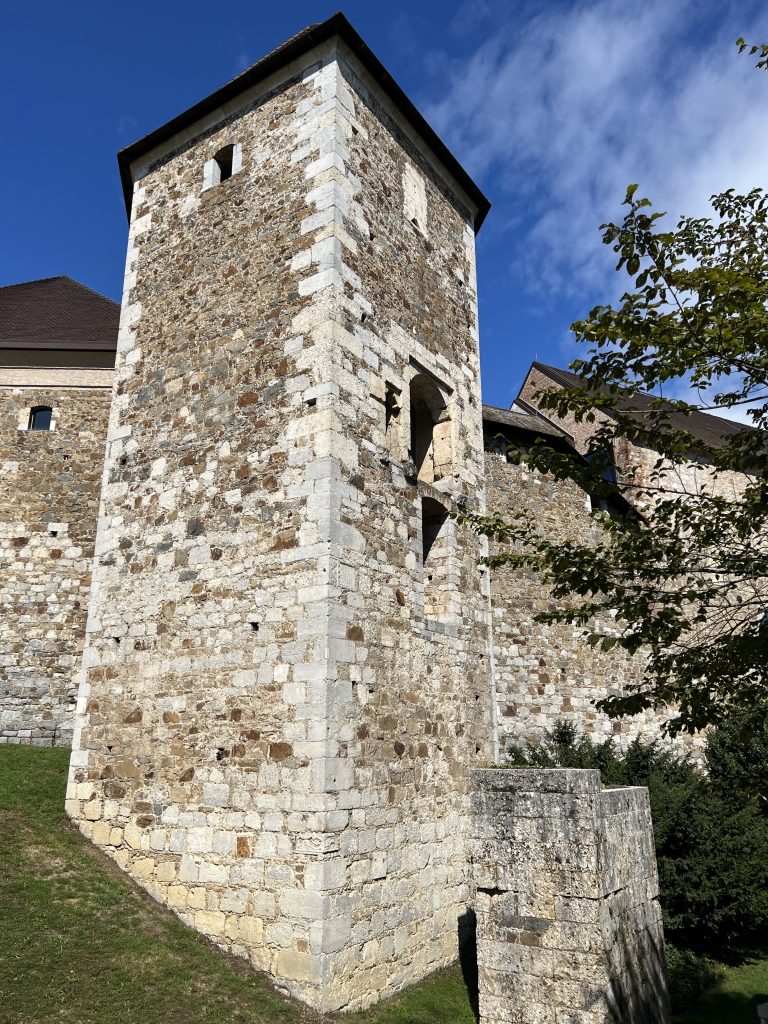
In addition, the views of Ljubljana and the distant mountains were beautiful.
Mirza told us a story about an imprisoned knight who escaped the castle. We tried to imagine how he slipped the hermetically-sealed dungeon in the Tower of Erasmus. He was wealthy, so it was most likely he bribed a guard.
St. George's Chapel
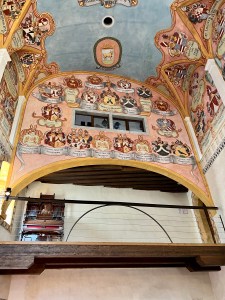
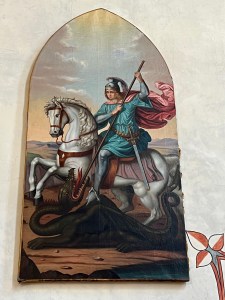
St. George’s Chapel is a beautiful and vibrant sight, with its pink walls and colorful coats of arms. It is in stark contrast to the dingy cells of the castle’s prison built by the Austrians. The chapel’s interior walls were decorated in the Baroque era, while the exterior walls are much older.
After walking around the castle, we took the Funicular down the hill to explore the Old Town. Our first stop was at The Dragon Bridge.
Jason and the Dragon Bridge
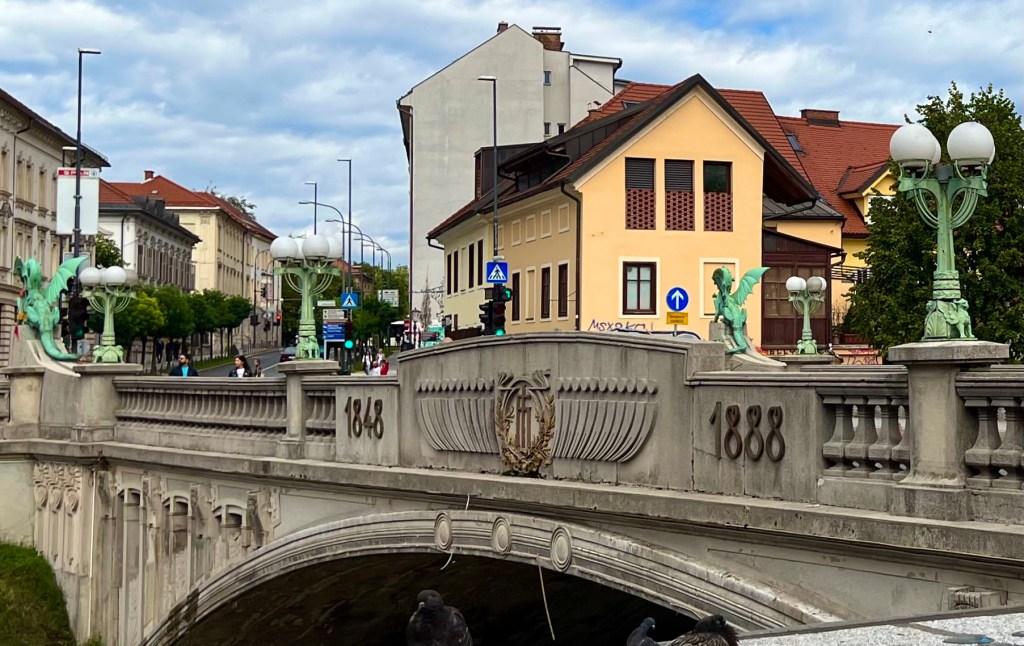
The Art Nouveau Dragon Bridge, with its four giant copper dragon statues, was one of Europe’s largest reinforced concrete bridges when it was built in 1901. It replaced a wooden bridge called Butcher’s Bridge that was damaged in the earthquake and was rebuilt nearby.
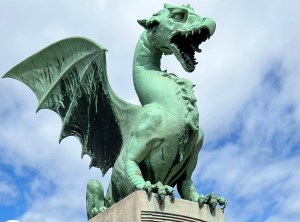
Local folklore says that Jason, the Greek mythological leader of the Argonauts, is the founder of Ljubljana and that he slew a dragon that guarded the Golden Fleece.
That is the inspiration for the dragon motif, which is very impressive.
We walked on to Butchers’ Bridge.
Butchers' Bridge
A new pedestrian Butchers’ Bridge was built in 2010. There are thousands of padlocks etched with initials or personal messages dangling from the cable railing. Like other European bridges, the padlocks are put there by love-struck couples.
Despite the romantic symbolism of the padlocks, the bridge has a slightly unnerving feel with the surrounding sculptures. There is a freakish cluster of butchered animal heads on top of the railing to commemorate the original Butchers’ Bridge, where animal parts were tossed into the river. A few padlocks have been secured around the jaws of the gruesome creatures.
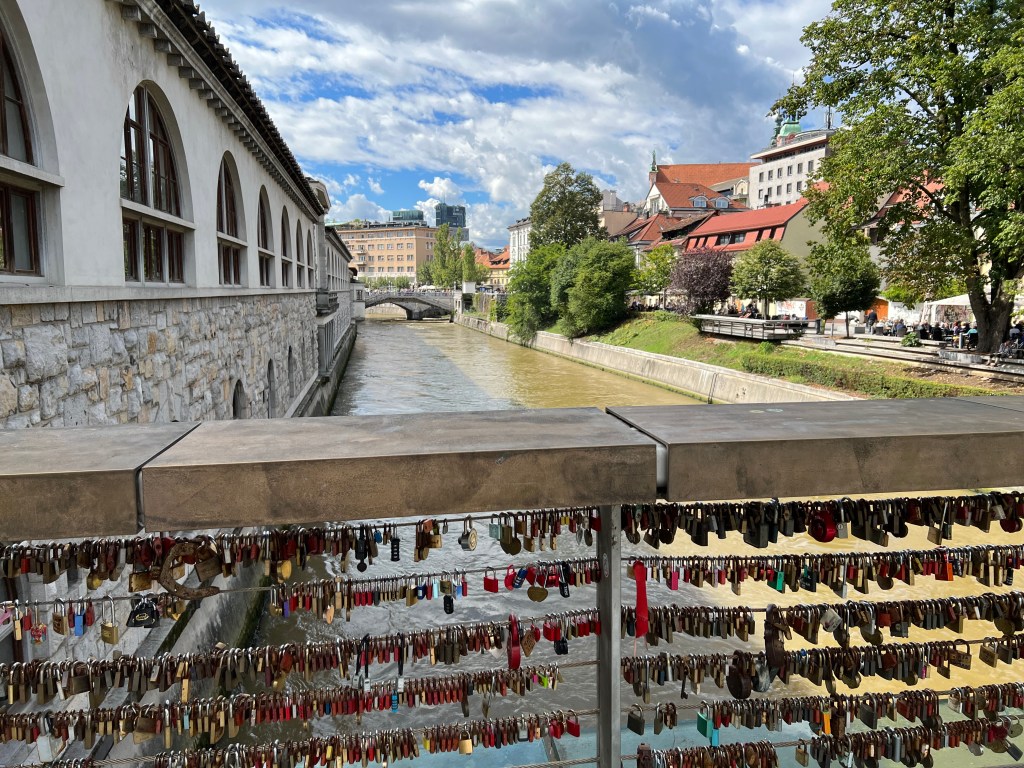
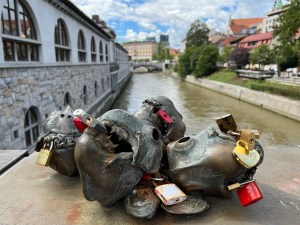
A tall statue of Satyr, the mythological lusty man-beast, stands on the bridge, as do figures of the banishment of Adam and Eve from Paradise, and Prometheus, who an eagle gutted, according to another myth.
They are all creations of local sculptor Jakov Brdar whose artwork is scattered throughout Ljubljana. It’s not apparent why these sculptures co-exist with the lovers’ padlock theme, but there must be a connection somewhere.
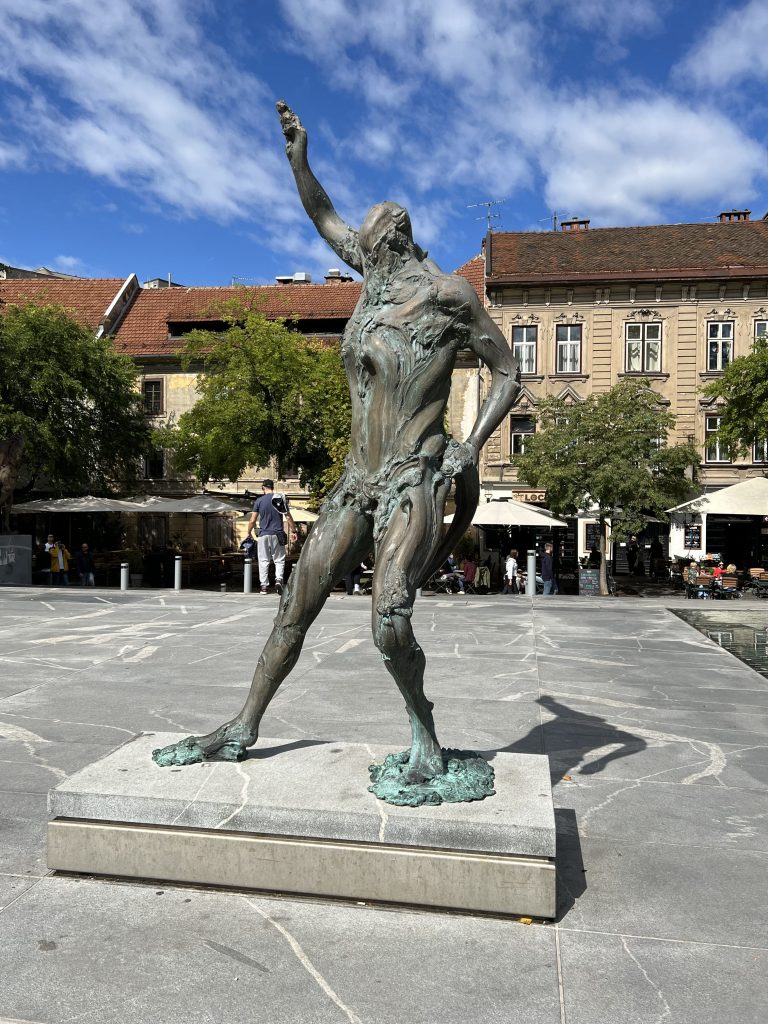
Prešeren Square and the Poet
It was a different scene further on at Prešeren Square.
At the center of the pedestrian, Prešeren Square stands a tall bronze statue of this city center’s namesake, Slovene romantic poet France Prešeren. He is looking across the square at his muse, Julija Primic, who is sculpted into the wall of a yellow house.
Meanwhile, the topless Muse of Poetry sits above him, dangling a laurel over his head. The truth is, France Prešeren was a man about town, known for his drinking and womanizing, not only for his poetry. Our guide, Mirza, told us a funny story about the statue’s unveiling in 1905. The statue was in full view of the nearby Franciscan Church of Annunciation. The priest and his parishioners were so distraught about the muse’s state of undress that someone came by daily to cover her up.
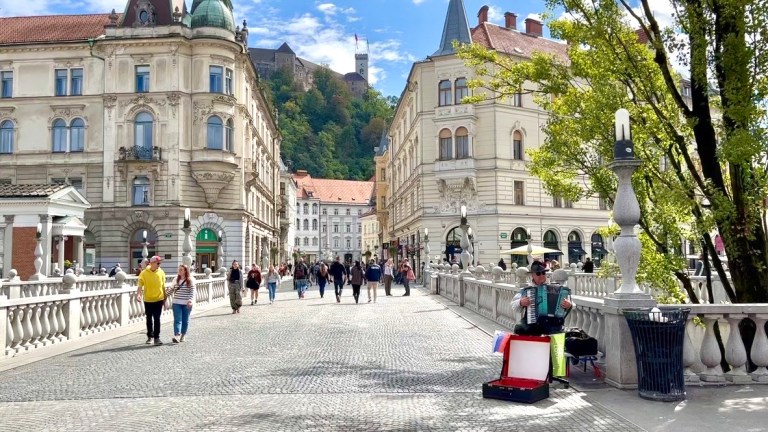
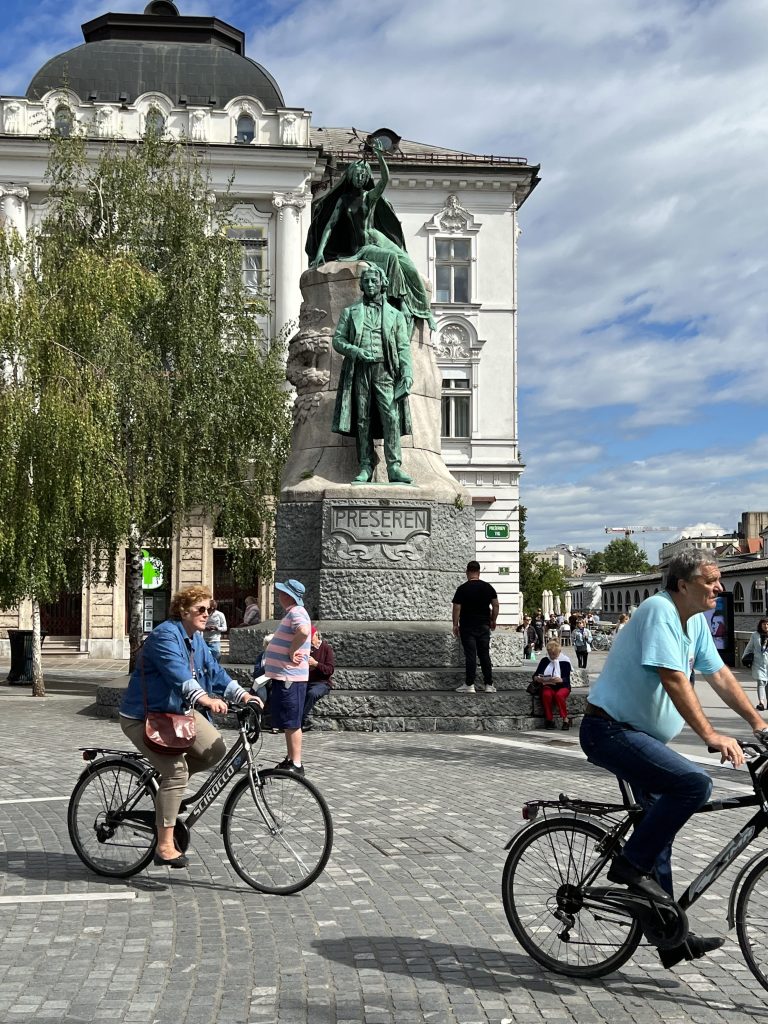
Triple Bridge and Cobblers' Bridge
Other Things To Do
- Take a boat cruise along the Ljubljanica River
- Walk among the chestnut trees and gardens of Tivoli Park.
- Tour the house of Art Nouveau architect Josef Plečnik
- It was his 150th birthday in 2022.
- Visit two of the many museums:
- Shop at the Riverside Market
- Eat local cuisine at a restaurant along the river. I would order the “Kranjska kielbasa” (Carniolan sausage) and a “Prekmurska gibanica” (Prekmurje layered cake).
This post is the 3rd of my 19-part Balkan series that began with Road Tripping on the Balkan Peninsula in September 2022. There, you will find our itinerary to help you plan your trip.
- Ratings are based on 1) Natural Beauty 2) Unique Activities 3) Old World Charm
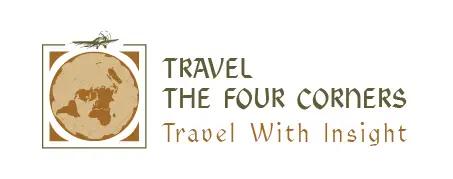
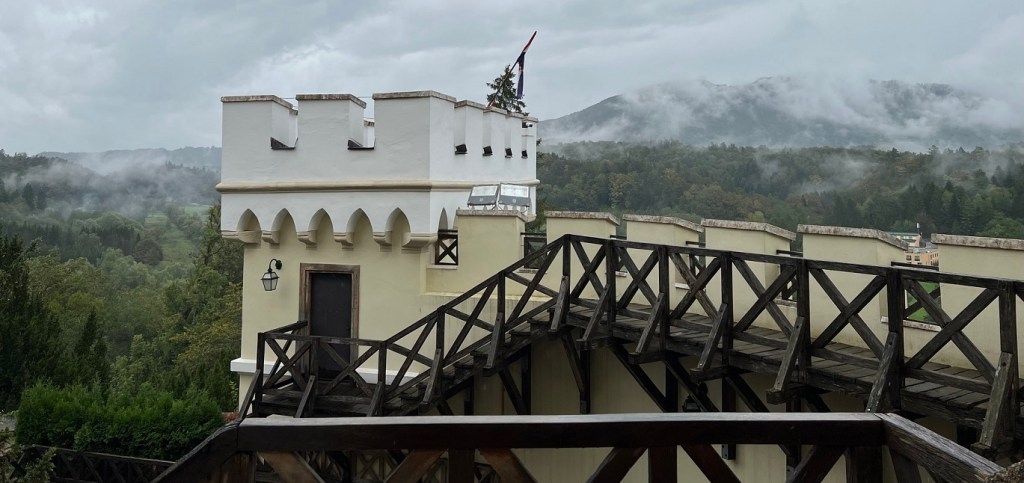
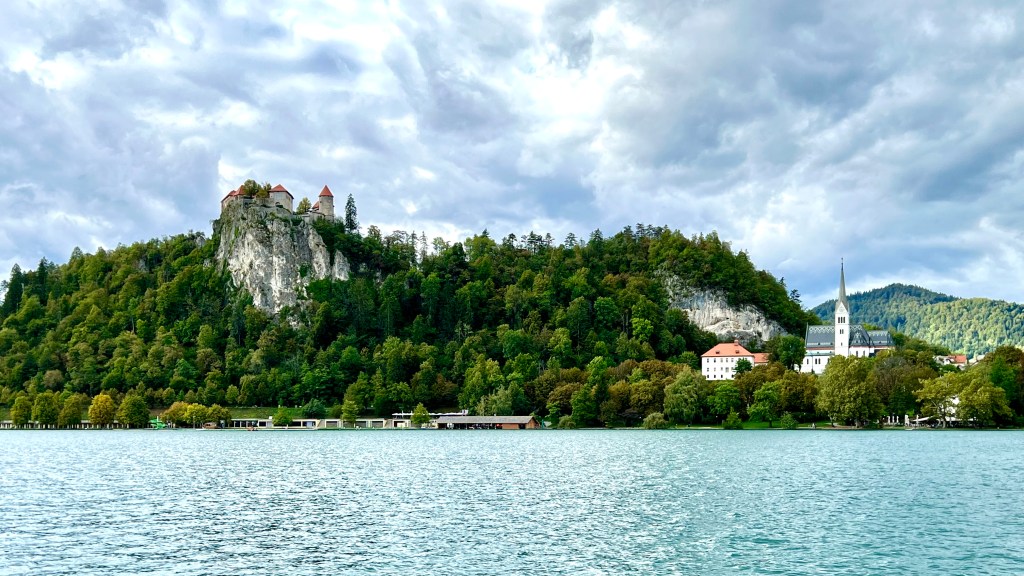










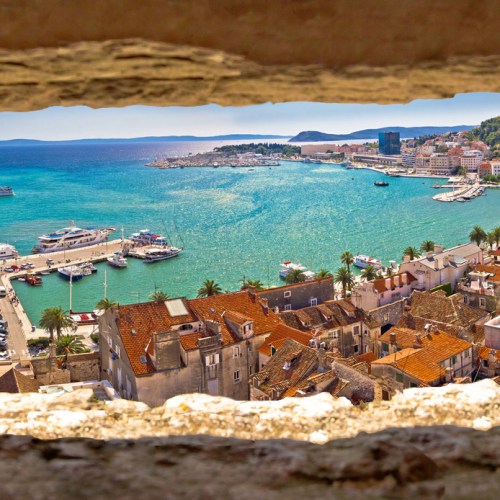
No comment yet, add your voice below!
Discover more from Travel The Four Corners
Subscribe now to keep reading and get access to the full archive.
Continue reading